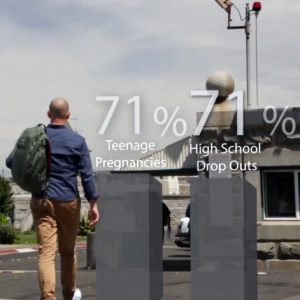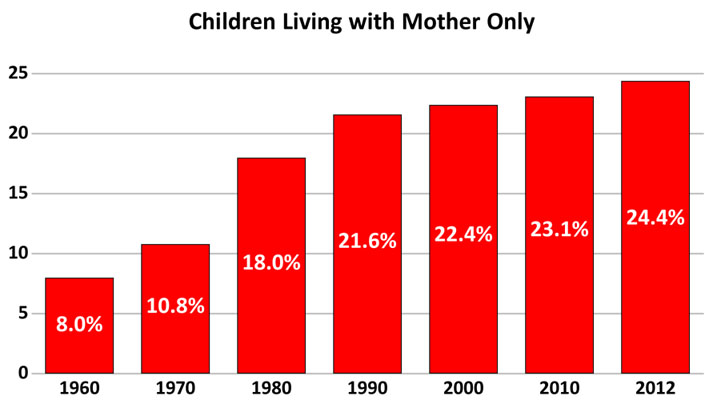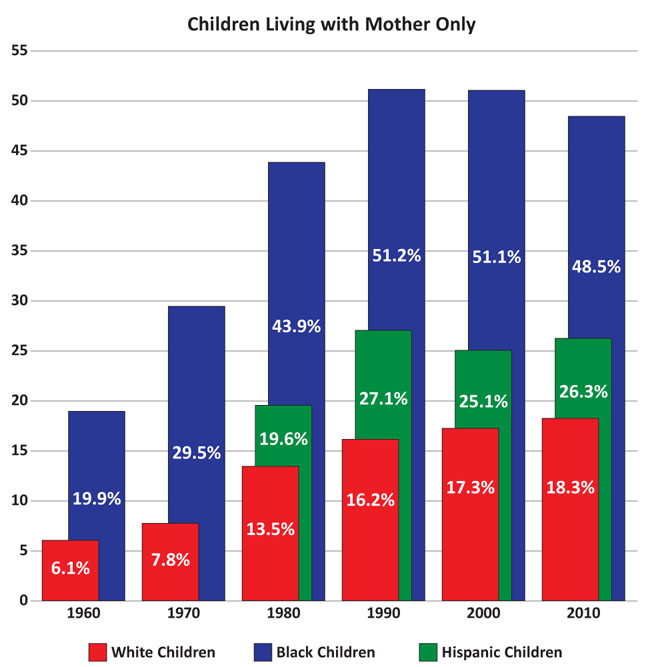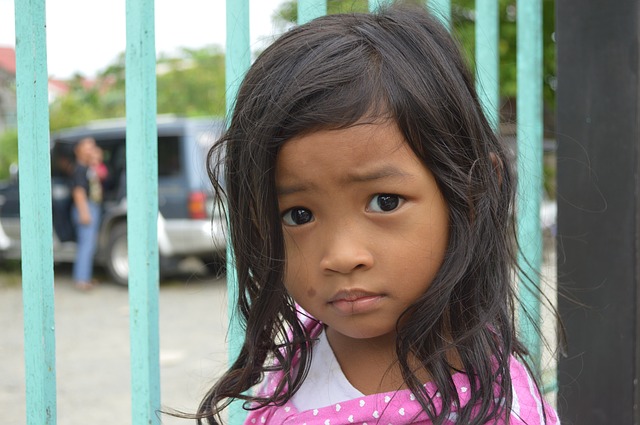More than 20 million children live in a home without the physical presence of a father. Millions more have dads who are physically present, but emotionally absent. If it were classified as a disease, fatherlessness would be an epidemic worthy of attention as a national emergency.
The impact of fatherlessness can be seen in our homes, schools, hospitals and prisons, as reflected in the above clip from the documentary film, Irreplaceable. In short, fatherlessness is associated with almost every societal ill facing our country’s children.
How can you address the fatherlessness epidemic?
Start in your own home with one or more of the following resources from NCF.
- Our Resource Center – with articles and videos on a wide variety of topics related to fatherhood.
- The CFP: Championship Fathering Profile – get feedback on 13 specific areas of your fathering—and action plans for the ones you may need to address.
- NCF’s weekly email – arrives each Friday to give you insights, encouragement, and some practical action points to help you engage your children.
- Radio Clips – hear Carey Casey with a 3-minute message that will inspire and equip you to “keep up the good work” with your kids.
- Fatherless Epidemic Infographic – Infographic full of statistics about the problems facing fatherless children today.
More Data on the Extent of Fatherlessness
- An estimated 24.7 million children (33%) live absent their biological father.
Source: U.S. Census Bureau, Current Population Survey, “Living Arrangements of Children under 18 Years/1 and Marital Status of Parents by Age, Sex, Race, and Hispanic Origin/2 and Selected Characteristics of the Child for all Children 2010.” Table C3. Internet Release Date November, 2010.
- Of students in grades 1 through 12, 39 percent (17.7 million) live in homes absent their biological fathers.
Source: Nord, Christine Winquist, and Jerry West. Fathers’ and Mothers’ Involvement in their Children’s Schools by Family Type and Resident Status. Table 1. (NCES 2001-032). Washington, DC: U.S. Dept of Education, National Center of Education Statistics, 2001.
- 57.6% of black children, 31.2% of Hispanic children, and 20.7% of white children are living absent their biological fathers.
Source: Family Structure and Children’s Living Arrangements 2012. Current Population Report. U.S. Census Bureau July 1, 2012.
- According to 72.2 % of the U.S. population, fatherlessness is the most significant family or social problem facing America.
Trended Data
- Among children who were part of the “post-war generation,” 87.7% grew up with two biological parents who were married to each other. Today only 68.1% will spend their entire childhood in an intact family.
Source: U.S. Census Bureau. “Living Arrangements of Children Under 18 Years Old: 1960 to Present”. U.S. Census Bureau July 1, 2012.
- With the increasing number of premarital births and a continuing high divorce rate, the proportion of children living with just one parent rose from 9.1% in 1960 to 20.7% in 2012. Currently, 55.1% of all black children, 31.1% of all Hispanic children, and 20.7% of all white children are living in single-parent homes.
Source: U.S. Census Bureau. “Living Arrangements of Children Under 18 Years Old: 1960 to Present”. U.S. Census Bureau July 1, 2012.More than 20 million children live in a home without the physical presence of a father. Millions more have dads who are physically present, but emotionally absent. If it were classified as a disease, fatherlessness would be an epidemic worthy of attention as a national emergency.
The impact of fatherlessness can be seen in our homes, schools, hospitals and prisons, as reflected in the above clip from the documentary film, Irreplaceable. In short, fatherlessness is associated with almost every societal ill facing our country’s children.
How can you address the fatherlessness epidemic?
Start in your own home with one or more of the following resources from NCF.
- Our Resource Center – with articles and videos on a wide variety of topics related to fatherhood.
- The CFP: Championship Fathering Profile – get feedback on 13 specific areas of your fathering—and action plans for the ones you may need to address.
- NCF’s weekly email – arrives each Friday to give you insights, encouragement, and some practical action points to help you engage your children.
- Radio Clips – hear Carey Casey with a 3-minute message that will inspire and equip you to “keep up the good work” with your kids.
- Fatherless Epidemic Infographic – Infographic full of statistics about the problems facing fatherless children today.
More Data on the Extent of Fatherlessness
- An estimated 24.7 million children (33%) live absent their biological father.
Source: U.S. Census Bureau, Current Population Survey, “Living Arrangements of Children under 18 Years/1 and Marital Status of Parents by Age, Sex, Race, and Hispanic Origin/2 and Selected Characteristics of the Child for all Children 2010.” Table C3. Internet Release Date November, 2010.
- Of students in grades 1 through 12, 39 percent (17.7 million) live in homes absent their biological fathers.
Source: Nord, Christine Winquist, and Jerry West. Fathers’ and Mothers’ Involvement in their Children’s Schools by Family Type and Resident Status. Table 1. (NCES 2001-032). Washington, DC: U.S. Dept of Education, National Center of Education Statistics, 2001.
- 57.6% of black children, 31.2% of Hispanic children, and 20.7% of white children are living absent their biological fathers.
Source: Family Structure and Children’s Living Arrangements 2012. Current Population Report. U.S. Census Bureau July 1, 2012.
- According to 72.2 % of the U.S. population, fatherlessness is the most significant family or social problem facing America.
Source: National Center for Fathering, Fathering in America Poll, January, 1999.
Trended Data
- Among children who were part of the “post-war generation,” 87.7% grew up with two biological parents who were married to each other. Today only 68.1% will spend their entire childhood in an intact family.
Source: U.S. Census Bureau. “Living Arrangements of Children Under 18 Years Old: 1960 to Present”. U.S. Census Bureau July 1, 2012.http://www.census.gov/population/socdemo/hh-fam/ch5.xls
- With the increasing number of premarital births and a continuing high divorce rate, the proportion of children living with just one parent rose from 9.1% in 1960 to 20.7% in 2012. Currently, 55.1% of all black children, 31.1% of all Hispanic children, and 20.7% of all white children are living in single-parent homes.
Source: U.S. Census Bureau. “Living Arrangements of Children Under 18 Years Old: 1960 to Present”. U.S. Census Bureau July 1, 2012. http://www.census.gov/population/socdemo/hh-fam/ch5.xls
- Source: Census Bureau. “Living Arrangements of Children Under 18 Years Old: 1960 to Present.” U.S. Census Bureau, July 1, 2012. http://www.census.gov/population/socdemo/hh-fam/ch5.xls
- White children born in the 1950-1954 period spent only 8% of their childhood with just one parent; black children spent 22%. Of those born in 1980, by one estimate, white children can be expected to spend 31% of their childhood years with one parent, and black children 59%.
Source: Popenoe, David. Life Without Father (New York: Simon and Schuster, 1996), 23.
- Source: US Census Bureau, “Living Arrangements of Children Under 18”: Tables –CH-2, CH-3, CH-4. 1960 – Present. U.S. Census Bureau July 1, 2012.
Join Us
You’ve heard about the crisis of fatherlessness and the negative consequences for children and for our society. Even if you are an involved dad, until we are successful, your children and grandchildren will be growing up in a culture of absent fathers and unfathered children. They will be affected!
You can be a part of the solution!
Learn how to Get Involved, and if you’d like to support us financially, please donate today.
The Extent of Fatherlessness
June 18, 2016 by



